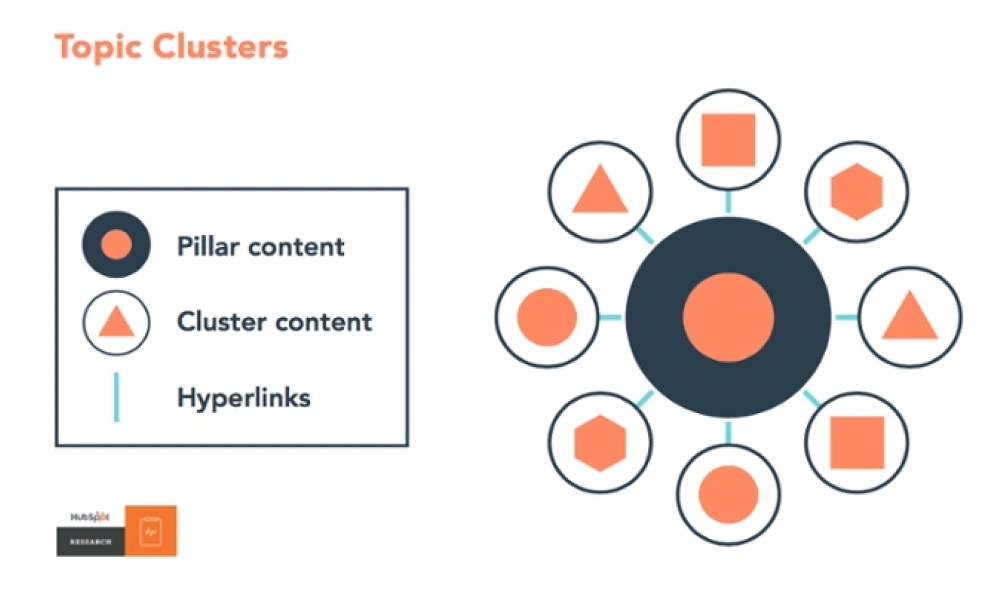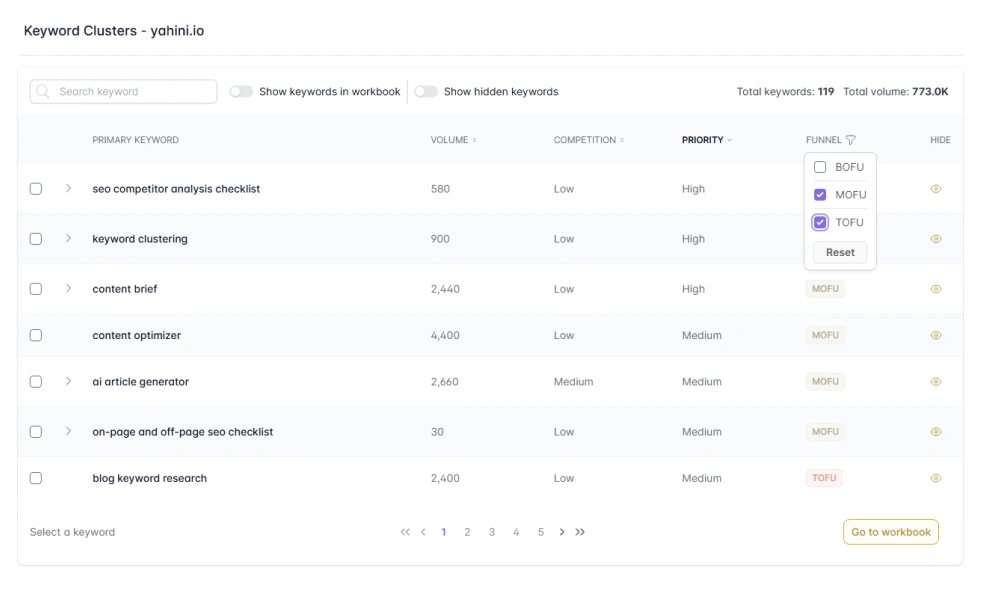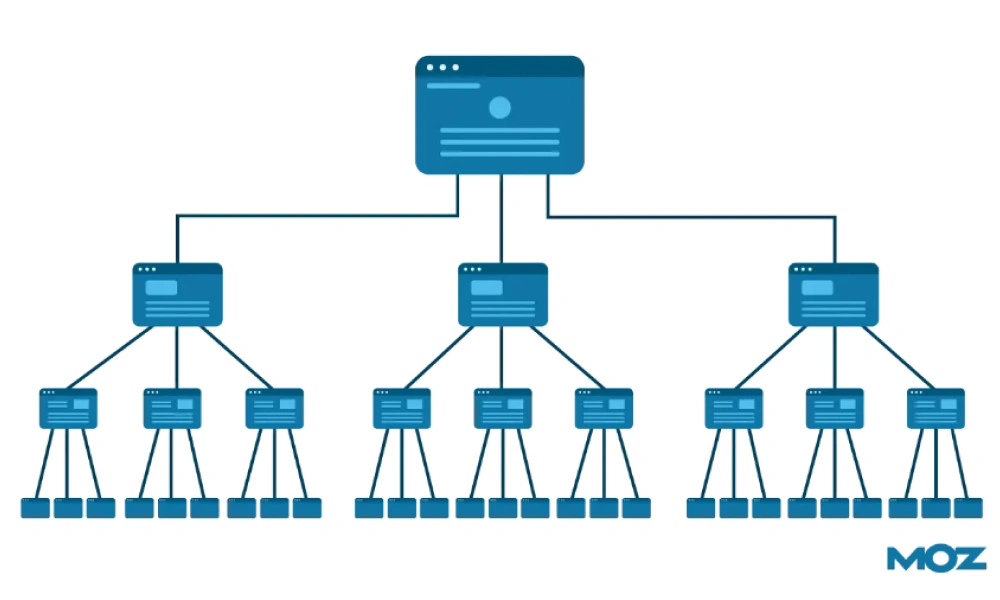
How Topic Clustering Transforms Your Content Marketing Strategy

Co-Founder / CTO
You're probably already creating great content, but are you making the most of it?
If not, you should probably give topic clustering a try – it’s one of the smarter ways to organize your info which makes it easier for readers to find. And get this: Google loves interconnected content just as much as people do.
Topic clustering is all about taking those random blog posts and articles and linking them up in a logical way under core topic pillars using internal links. Instead of a jumbled mess, you create self-contained content hubs that cover a topic from every angle.
For your audience, it's a satisfying one-stop-shop experience rather than a frustrating game of chase-the-link, enhancing their overall user experience.
In this article, we’ll look at how topic clustering can transform your overall marketing strategy.
Table of Contents
Understanding Topic Clusters
Picture your website as a big city library. The pillar pages are the encyclopedias that give you an extensive overview of major subjects. The cluster content pieces are more specialized books that explore different angles and subtopics in greater depth.
By grouping them into curated clusters around core topics, you create an intuitive, user-friendly experience. Readers can easily navigate from the broad overview to the granular details that interest them most.
What is a Pillar Page?

A pillar page is the backbone of your topic cluster. It's a meaty, in-depth piece that leaves no stone unturned when covering a core subject area. This is your main pillar content.
We're talking the definitive guide, the one-stop resource, the content piece to “rule them all”.
A great pillar page crystallizes complex ideas and provides a logical framework for the subject. It draws readers in with an engaging narrative while thoroughly addressing all key points.
What are Cluster Content Pieces?
If pillar pages are like encyclopedias, cluster content is the equivalent of separate book volumes. These laser-focused pieces explore the nuances and sub-topics branching off from the main pillar subject.
The magic happens when you interlink these cluster pieces back to the pillar and each other, creating a strong network of internal links.
Why are topic clusters important for SEO?
Let's be real - Google's whole job is to serve up the best, most relevant content for any given search query. Topic clusters are like giving the world's most popular search engine a giant "Here's exactly what you're looking for!" neon sign, significantly aiding your search engine optimization efforts by clarifying your site's expertise and improving its search visibility. This strategy is designed to capture users with high informational intent.
By structuring your website into clearly defined topic areas with pillar pages and supporting cluster content, you're making it stupid easy for Google to understand what your site is all about.
They improve your website structure
Imagine going to the library and all the books are just randomly scattered on the floor. Not exactly an enjoyable or efficient experience, right?
The same applies to websites.
Topic clusters create an intuitive, hierarchical structure that makes navigation a breeze for human visitors and search engine crawlers alike, which greatly improves the user experience.
Pillar pages map out the major subject areas, while cluster pieces allow for deeper dives into specific sub-topics.
They enhance your topical authority
You know that one friend who's an absolute fountain of knowledge on a particular subject? That's the vibe you want to cultivate with your topic clusters - become the go-to authority for your niche.
By covering a core topic through your pillar page and diving into every related sub-topic across your cluster pieces, you're signaling to Google that your website is the definitive resource on that subject. Topical authority like that doesn't go unnoticed; it's a major SEO boost.
The more thorough and high-quality your topic clusters, the more Google will see your site as a trusted expert.
Creating Your First Topic Cluster
Here’s a step-by-step framework to help you create your first topic cluster.
1. Choose Your Main Topic
This is where you get to flex your expertise and passion.
What core topic does your business know like the back of its hand? What subject area are your customers constantly seeking guidance on?
Pinpoint a nice, broad topic that ladders up to your products or services. It should be something meaty enough to warrant in-depth exploration but specific enough to provide unique value. Overly generic topics are a no-go - you want to stand out as a niche authority.
Not sure where to start?
You can use Yahini’s advanced keyword research and clustering feature. It can actually build out personalized keyword clusters for you, organized around primary topics and subtopics that map to every stage of the marketing funnel. This keyword research tool helps you identify not just the primary keyword for your pillar but also a whole list of keywords including those with high search volume and manageable keyword difficulty, ensuring you select the most relevant keywords for your strategy.

No more guessing which keywords to focus on. Yahini takes the busy work out of keyword research by automatically grouping related terms into logical pillar and cluster formations.
2. Identify Subtopics
Now it's time to bust out that mental map and start mapping out all the potential subtopics and angles branching off from your main subject area, perhaps starting from a core seed keyword.
These more granular topics will form the basis for your cluster content pieces.
Don't hold back—let your knowledge flow freely and jot down every last idea. You can always narrow it down later.
The goal is to fully unpack and dissect that core topic into its components and nuances.
3. Create Your Pillar Page
With your topic and subtopics outlined, you're ready to create your pillar page. Settle in and prepare to go deep, creating true depth content.
Leave no stone unturned as you take readers on a logical journey through every aspect of the main topic.
Don't just list out subtopics, but provide context, insight, and a cohesive narrative thread that ties it all together.
This pillar page should be the undisputed content cornerstone of your cluster.
4. Develop Cluster Content
Now that you have that solid, authoritative foundation, it's time to drill down into those bite-sized cluster content pieces. Each one should zero in on a particular subtopic, allowing you to explore the nuances and finer details, often targeting specific long-tail keywords.
Please, don't just regurgitate the same information; cluster pieces of content need to provide unique value. Use them to offer fresh perspectives, more advanced tips and strategies, or updated news and insights. The key is creating content pyramids where each piece builds on the last.
And of course, be sure to liberally link back to your pillar page and between related cluster pieces to reinforce that interconnected content experience with strong internal links.
5. Interlink Your Content

After publishing your pillar page and cluster pieces, your final step is to ensure that all that great content is properly cross-linked and structured. This reinforces your topic cluster architecture and makes it easy for readers and search engines to seamlessly navigate between pieces.
Go through each piece and add contextual links at relevant points—both to your pillar page and to other cluster content that provides complementary information. The more effortlessly users can move from broad overviews to specific details, the stickier your content experience will be.
But what are the challenges?
As powerful as topic clusters can be, they can be a real challenge for writers and strategists.
Here are a few key challenges to keep in mind:
Maintaining Content Quality
It's tempting to crank out cluster pieces as quickly as possible once that pillar page is published. But taking a quantity over quality approach is a surefire way to undermine your whole strategy.
Thin, poorly researched content pieces will stick out like a sore thumb and disrupt the cohesive experience you're striving for.
The solution?
Treat every single piece of cluster content with the same level of diligence and care as you did that pillar page. Maintain a relentless focus on delivering substantive, well-written, and insightful information at every turn.
It'll take more time and effort upfront, but your audience will thank you for it.
Remember to update and refresh existing content, too. Topics are constantly evolving, so make it a point to revisit and revise older pieces regularly to keep them accurate and relevant.
Stale, outdated content is just as bad as low-quality stuff.
Balancing Depth and Breadth
With topic clusters, you're walking a delicate tightrope between covering a subject area comprehensively while still providing focused, digestible content. It's a balance of depth and breadth that's easier said than done.
Your pillar page needs to be the authoritative, all-encompassing guide that leaves no stone unturned on the core topic.
But go too broad or surface-level, and you'll end up with a bloated, hard-to-follow mess.
Inversely, your cluster pieces should explore specific angles and nuances in more granular detail. But veer too deep into the weeds, and you'll lose the thread connecting it all back to that main pillar.
Straddling this line takes careful planning and a deep understanding of your audience.
Before drafting a single piece of content, map out exactly what areas and sub-topics need to be covered, and to what level of depth. Define a clear scope and progression for how your cluster will systematically explore the subject matter.
Then, stick to your predetermined content plan like glue.
If a particular sub-topic starts ballooning out of control, rein it back in and consider breaking it off into its own dedicated cluster.
If you find yourself skating over areas that warrant more attention, dig deeper or split that content into multiple pieces.
Make your topic cluster strategy even better
Let’s not stop at the basics. Here are two ways you can improve on your topic clustering strategy.
Incorporate Different Content Formats
Topic clusters don't have to be a one-trick text-based pony.
In fact, diversifying your content formats can seriously elevate the experience for audiences with different learning styles and preferences.
For visual learners, incorporate videos, infographics, charts, and other multimedia elements into both your pillar and cluster pieces. Seeing the concepts explained through another medium can solidify understanding and keep things engaging. Plus, it injects more variety into your content mix.
Podcasts and audio formats are a great option for auditory learners or those who prefer consuming content on-the-go. Consider recording audio versions of your pillar pages or spinning off cluster topics into dedicated podcast episodes.
The key is using your topic cluster as a framework to create overlapping, complementary content assets in multiple formats.
That way, no matter how someone prefers to learn, you've got an entry point catered directly to them.
Update and Expand your Clusters
Here's the hard truth – no topic cluster is ever truly "finished."
Trends are constantly shifting, new information is emerging, and those content gaps you missed initially will eventually become glaringly obvious.
That's why an effective cluster strategy doesn't end once those initial pieces go live. It's important to adopt a mindset of continuous improvement through regular updates and expansions.
Set a recurring calendar reminder to revisit each of your topic clusters quarterly or semi-annually. Comb through for outdated information that needs refreshing and opportunities to fill in holes with new cluster pieces.
You'll also want to keep a running list of potential new subtopics to develop as your subject area evolves.
The beauty of this modular, interlinked content structure is that it's built to constantly grow and adapt over time.
Lean into that flexibility by treating your clusters as perpetual works in progress, not finite destinations.
Not just an SEO hype
At this point, the benefits of topic clusters should be crystal clear. This strategic content architecture fundamentally elevates the entire user experience on your website and can drive significant organic traffic.
For visitors, topic clusters provide an intuitive, self-contained journey for discovering and consuming content.
On the business side, covering your focus areas solidifies your domain authority and expertise in Google's eyes. The more cohesive and interconnected your content clusters, the higher you're likely to rank for relevant searches and any specific search query, making each SEO topic cluster a powerful asset. This approach often starts with a foundational seed keyword for the main topic.
But let's be real—properly implementing and maintaining an effective topic cluster strategy is not easy.
Which is where Yahini's AI-powered content strategy platform comes in…
Yahini offers you the strategic advice you need to create a content strategy from the ground up. Its AI has been trained by seasoned content strategists, providing you with expert-level content briefs right at your fingertips.
Ditch the generic outlines! Sign up now.